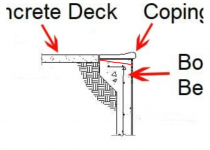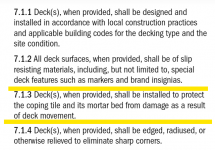- Jun 7, 2017
- 9,986
- Pool Size
- 29000
- Surface
- Plaster
- Chlorine
- Salt Water Generator
- SWG Type
- Jandy Aquapure 1400
The builder wants $3750 to remove the tile, repair the crack with hydraulic cement and mortar and replace tile. He wants an additional $8226 if we choose to resurface the pool at that time. The pool is 15x30 and between 3 and 5 feet deep. It is built on pilings.
Both of those numbers are not too bad. Do you need the plaster replaced? Generally you can get 15 years out of it.





